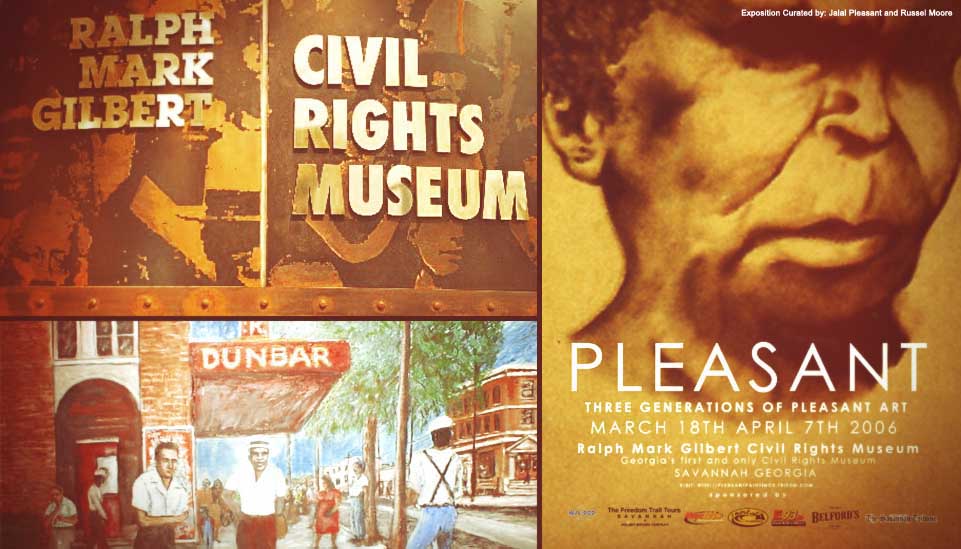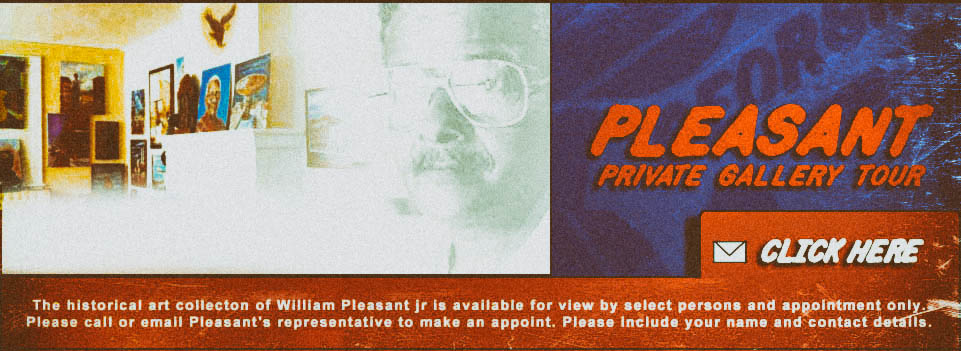Pleasant Signs chronicles the artistic life of one-of-a-kind southern painter/fine artist William M. Pleasant, Jr. Pleasant created a vivid and sophisticated window into complex southern African American identity. His perspective pushed against popular cliches of southern black culture and life. As a Baha'i and a civil rights activist, he uniquely explored commonly held stereotypes in post jim crow America. William M. Pleasant's art captured multiracial and empowerment themes that were unusual in the emerging modern south. Pleasant was one of the founding members of the Baha’i Faith in Savannah, Georgia and a long time leader in the assembly. He participated in the multi-racial Baha'i community at a time when such affiliations were suspect and subject to government investigation. It was this type of boldness and integrity that underscored his artistic vision of the city. That vision included an examination of multi cultural unity as well as an appreciation of the rich and distinct African American presence in the region.
In the wake of the now infamous Troy Davis execution and current economic and social disparities in this black majority region, his work explores the underlying tensions, sentiments, and expectations that continue to resonate. As the hub of the largest productive antebellum free black community, Savannah's present suggest a disruption in a would-be continuity. Those issues concern the many untold stories that Pleasant uniquely painted in the time that they occurred-- stories that suggested what has become a sophisticated trajectory for/in the future. Those images, legacies, and contributions are distilled in this distinctive reference: Pleasant Signs.
Mr. William Merriette Pleasant, Jr. was born June 23, 1928. He was a 33' Mason, a Corporal in the United States Navy, a member of the Mu Eta Kappa Fraternity, and one of the early members of the Savannah NAACP. He was a graduate of Beach High School in Savannah, Georgia, attended Savannah State College; Delaware State College, Dover, Delaware; Tyler School of Art of Philadelphia, Pennsylvania, and graduated from York College, York, Pennsylvania. He was first of the founding members of the Bahai Faith in Savannah, Georgia and served on the assembly. As a gifted child prodigy he appeared on the Major Bowles Amateur Hour, a then famous national radio program, and subsequently toured the nation as a noted junior showman, and a featured guest on WOR radio in New York. Up until his death he continued to work as a singer and television voice over specialist for regional programs. William M. Pleasant, Jr. was grandnephew of the famed Georgia political activist, U.S. Customs House official, restauranteur, and director of Savannah Ports Authority, Louis Pleasant. Louis was also co-founder-co-publisher of the Savannah Colored Tribune (1875)-- now known as the Savannah Tribune.
For more information about Louis M. Pleasant click here
William Pleasant, Jr. documented many of the influential people and historical landmarks of Savannah's black legacy. Pleasant collaborated with celebrated Georgia civil rights activist and advocate W.W Law on a number Civil Rights activities in the city. As a result, they brainstormed the creation of the first Savannah Black American history coloring book. Pleasant, along with his wife Sadie B. Pleasant, wrote and designed the book (within the heydays of the Black Civil Rights and Black Power era) as a way to further an assertion of the region's African/African American presence. Another notable example of this kind of work was once on display at the Barnard Street Elementary school. Pleasant's mural depicted scenes of historical significance along with scenes of Indigenous culture, and daily African American life in the local Savannah community. Sometime in the early 90's this mural art was painted over by the Savannah College of Art and Design when the Barnard Street School building was presented to that institution.
A few surviving Pleasant signs and murals created by William and Albert Pleasant (his younger brother) can be found all over the city of Savannah Georgia and the surrounding area. Many of those works exist in some of Savannah's most celebrated historical locations. Those locations include Savannah City Market, the Savannah Visitor's Center complex, and Beth Eden Baptist Church (designed by Henry Urban in 1893 for an African-American congregation). Pleasant's work over the years, as well, has made it into the set-work and exteriors of a few major films including the classic Negro Baseball League parable "Bingo Long", and most recently the rock biopic "CBGB".
William M. Pleasant, Jr. created a trove of paintings and other works that celebrated his first-hand witness of Gullah-Geechee and Southern experience in the Georgia/ South Carolina low country (1928b-1997d). Pleasant's life and work were seriously enhanced by the legacies of Gullah-Geechee presence in Savannah. The city and the entire region exist in the wake its historic cultural impact as it yet- still awaits a full recollection of its importance. His contributions will appear in a decade long exhibition at the new Smithsonian National Museum of African American History and Culture on the National Mall that illuminates the crucial spirit and vibrant legacy of early African American expression.
William Pleasant's art also appears in the Registry of African American Artists as well as in the private homes and collections of a diverse group of fine art collectors across United States of America. In 2012 he received the King-Tisdell Arts Award for arts excellence and cultural enrichment.
Contrary to some spurious official declarations of him as "only a sign painter who contributed placards for regional civil rights campaigns", Pleasant was a trained and accomplished Fine artist. That training included studies at Delaware State College and the Tyler school of Art in Philadelphia. His fine art and commercial work were often covered in area print and electronic media.


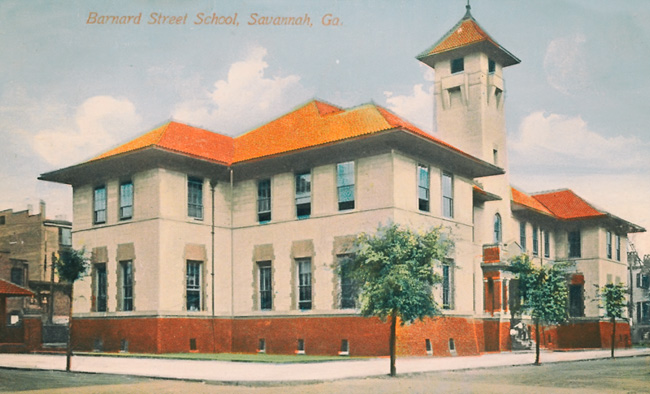
"Pepe Hall", Savannah College of Art and Design
(formally) The Barnard Street School, at 212 West Taylor Street
In the 1970s, William Pleasant was commissioned to paint a mural for the Barnard street elementary school: actually the first public school in the state. Sadie B. Pleasant, his wife, was a teacher at that school and a major figure in educating children of the famously known Yamacraw village (an historic enclave of African American residence in the city's mainly segregated historic district). The presence of the school itself in that area had been contentious for years. As the district was increasingly gentrified, the building was later sold in the early 1990s: when gentrification became complete. As a property of the commercially touted arts institution, SCAD, Savannah School of Art and Design, Pleasant's painting was removed from the walls of that historic site.
The work had been photographed, commemorated, and documented in the local press (Sommers, 1973) when it was first painted. Since it was intended as a pictorial narrative of the state, the mural and the site were major focal points of regional and state Georgia Day commemorations.
The work itself contained prominent portrayals of the state's rarely acknowledged Indigenous patriarch and co-founder Tomachichi. Pleasant also included a few oblique barbs about the state's consequential segregationists roots and practice. He superimposed the the modern state flag (a flag which was adopted as a reactionary barb against desegregation) with its prominent Confederate stars and bars-- as a looming and threatening backdrop to Tomachichi. Pleasant, as well, included classic Wampum iconography (with its apocryphal imagery and implicit meanings): Tomachichi is received by a sword fondling (hidden as an unseen hand to the left) Oglethorpe. Nonetheless, the art school SCAD painted over the signed and dated mural without ever contacting the artists' conservancy nor local historical preservation institutions. The deletion remains covered over in grey paint.
Note: The state flag from 1920-1952 did not contain the infamous Confederate stars and bars (NetState, 2016).
Sommers, R. (1973, January 19)
(Ref.) - Murals prepare schools for Georgia Day. Savannah Evening Press, The Home Front p. 15
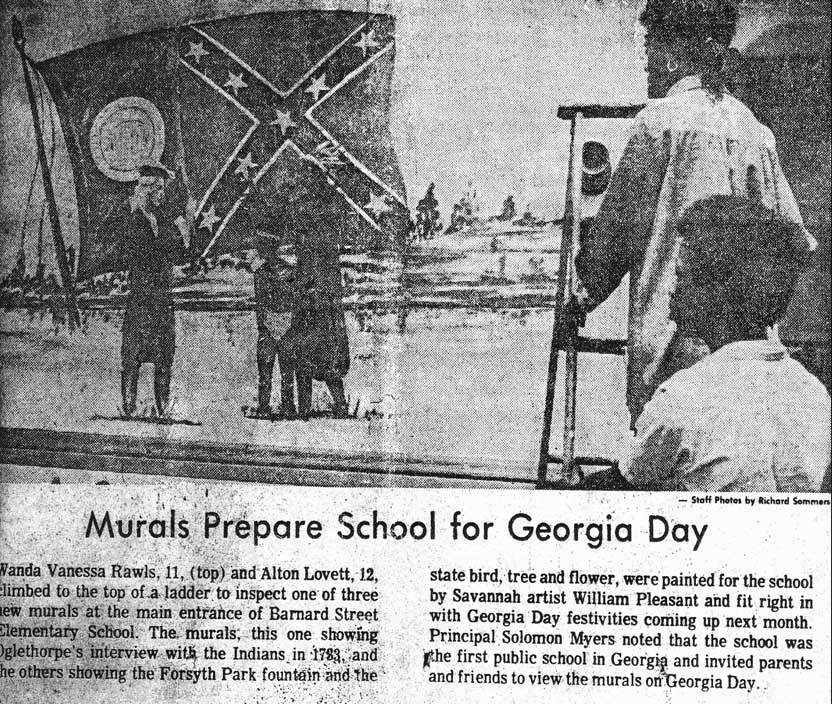 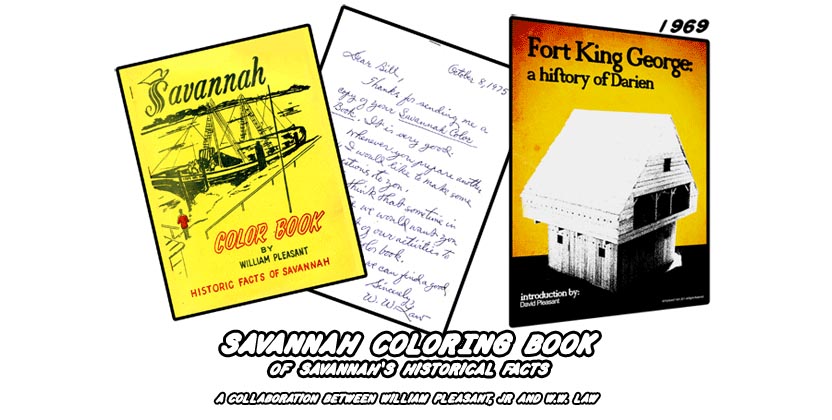
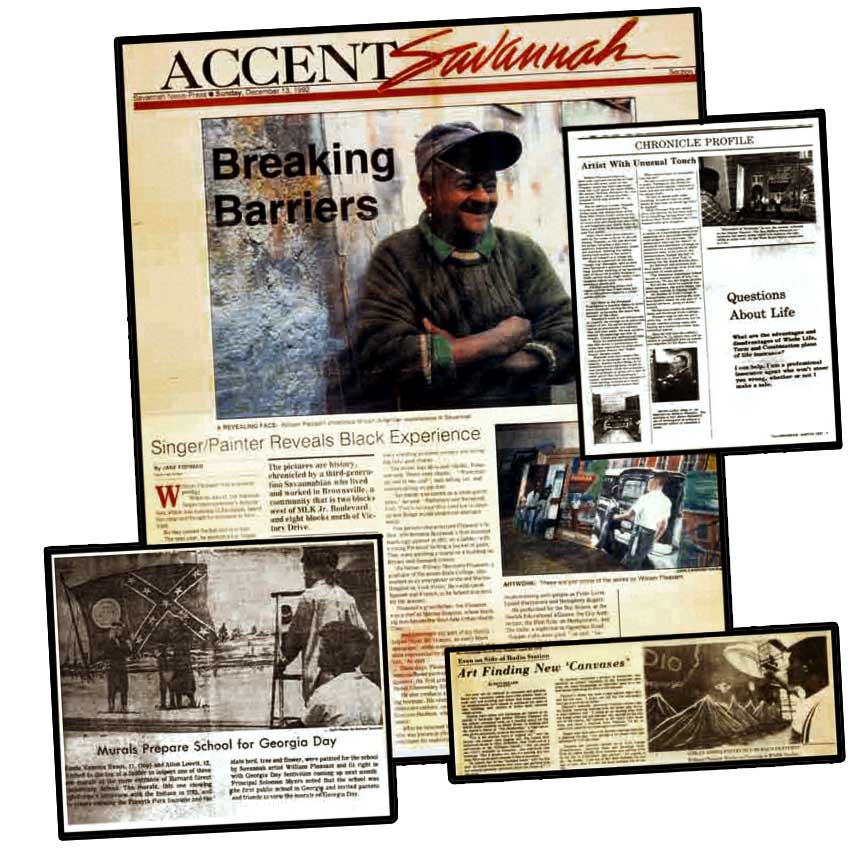 Collections: Collections:
The Beach Institute, Ralph Mark Gilbert Civil Rights Museum, King Tisdell Cottage, Savannah Georgia, University of Haifa Israel, Various private collectors, London, New York City, Amsterdam, Arnhem, Leiden, Paris
The Huckster-- while the original is on exhibition at the Smithsonian, is also a fine art print in internationally distributed publication. The historical art collection of William Pleasant, Jr. currently has not been selected for inclusion into the permanent exhibit of any museum or institution of art preservation within the state of Georgia.
The Pleasant family continues to preserve the William Pleasant, Jr Fine arts legacy. William Pleasant, Jr received various awards and memberships. For more information please visit the following websites. (below)
Awards Ceremony September 2012
Pleasant family receives renowned arts award. The award was officially accepted by son and Fine artist, Jalal Pleasant. On behalf of the Pleasant family for their ongoing work in the development and cultivation of the living arts.
Attendance was large for this wonderful invitation only black tie eventcelebrating the late Artist, William Pleasant, Jr and Pleasant family art legacy. Upper level representatives from Gulfstream Aerospace, CBS television, University of Georgia system academics, Michael Sotille family of architects and other national, local organizations and people of note were in attendance for this awards gala.
|




